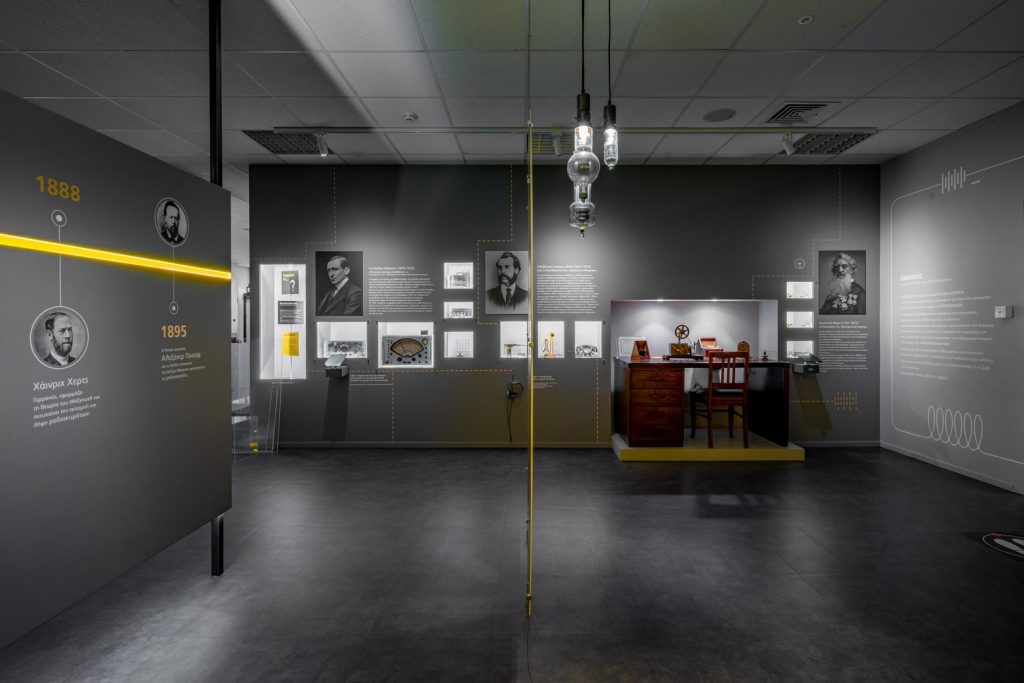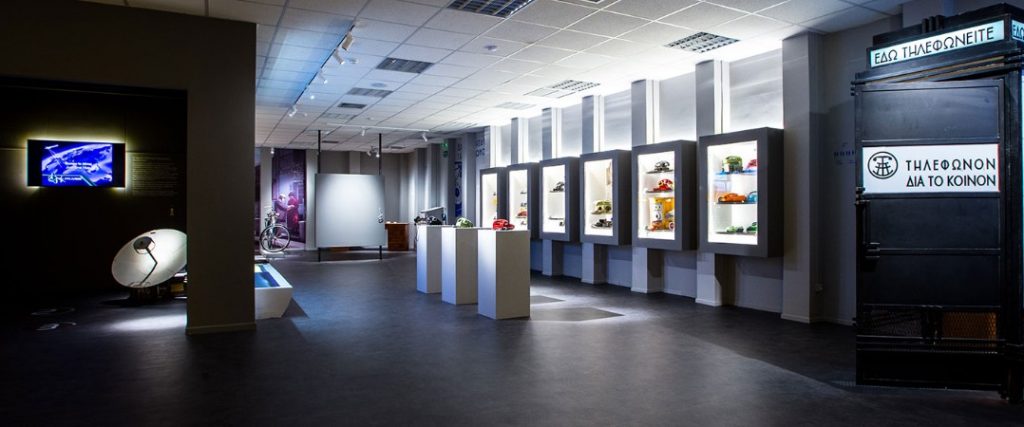Permanent exhibition
The word “telecommunications” is quite recent. It first made its appearance in the French language in 1904 and is associated with technological progress and the expansion of globalisation during the industrial age. However, the concept and need for long-distance communication dates back to antiquity. Initially, telecommunications was used almost exclusively by the military. The audible and visual methods were primarily used in the transmission of messages from a distance during the pre-electric era. Bugles and torches were the most common means of warning of an enemy’s approach, troop movements or the result of a battle.
If telecommunication is defined as the transmission of information via electromagnetic points, then it is clear that the telecommunications field is inextricably linked to electricity and its practical applications. Although electricity was first understood during the Enlightenment, practical application came in the 19th century. Inventions such as the battery, the electric light bulb and alternating current changed people’s lives throughout the world. It had a rapid impact on the economy and telecommunications, which in turn brought about the second industrial revolution at the end of the 19th century.
In Greece Telegraphy emerged in 1859 with the laying of the submarine cables that connect Piraeus with Ermoupolis, the most important port in Greece until the end of the 19th century. The acceleration of the techno-economic infrastructure was followed by the expansion of telecommunications. As in many other countries, telegraph wires travelled alongside rail lines, although priority was also given to submarine cables because of trade, navigation, and the island nature of Greek territory.
In 1892 with the passing of the Trikoupi law “on telephone communication” telephony began in Greece. In 1895 the Τ.Τ.Τ (Post Offices, Telegraphy, Telephony) was incorporated and would dominate the sector for half a century. Up until the 1920s the telephone network expanded at a very slow pace. Everything changed in 1930 with the incorporation of the Hellenic Telephone Company (AETE) by Siemens & Halske. New facilities were created, the automated telephony system superseded the manual system and the network was rebuilt with underground and aerial lines.
One of the first television studios in Greece has been restored in the rooms at the Museum. It was constructed by the French company Thomson and acquired by ΟΤΕ in 1968, shortly after Greek television was officially launched. It operated experimentally on the 5th floor of the OTE YMA-NYMA complex on Patission Street. At the same time, it was used for external broadcasts, and for transmission of television signal and broadcasts from the OTE Tower in Thessaloniki during the Thessaloniki International Fair.

Pre-electric era
The word “telecommunications” is quite recent. It first made its appearance in the French language in 1904 and is associated with technological progress and the expansion of globalisation during the industrial age. However, the concept and need for long-distance communication dates back to antiquity. Initially, telecommunications was used almost exclusively by the military. The audible and visual methods were primarily used in the transmission of messages from a distance during the pre-electric era. Bugles and torches were the most common means of warning of an enemy’s approach, troop movements or the result of a battle.

Electricity and the great inventors
If telecommunication is defined as the transmission of information via electromagnetic points, then it is clear that the telecommunications field is inextricably linked to electricity and its practical applications. Although electricity was first understood during the Enlightenment, practical application came in the 19th century. Inventions such as the battery, the electric light bulb and alternating current changed people’s lives throughout the world. It had a rapid impact on the economy and telecommunications, which in turn brought about the second industrial revolution at the end of the 19th century.

Telegraphy
In Greece Telegraphy emerged in 1859 with the laying of the submarine cables that connect Piraeus with Ermoupolis, the most important port in Greece until the end of the 19th century. The acceleration of the techno-economic infrastructure was followed by the expansion of telecommunications. As in many other countries, telegraph wires travelled alongside rail lines, although priority was also given to submarine cables because of trade, navigation, and the island nature of Greek territory.

Telephony
In 1892 with the passing of the Trikoupi law “on telephone communication” telephony began in Greece. In 1895 the Τ.Τ.Τ (Post Offices, Telegraphy, Telephony) was incorporated and would dominate the sector for half a century. Up until the 1920s the telephone network expanded at a very slow pace. Everything changed in 1930 with the incorporation of the Hellenic Telephone Company (AETE) by Siemens & Halske. New facilities were created, the automated telephony system superseded the manual system and the network was rebuilt with underground and aerial lines.

Television Studio
One of the first television studios in Greece has been restored in the rooms at the Museum. It was constructed by the French company Thomson and acquired by ΟΤΕ in 1968, shortly after Greek television was officially launched. It operated experimentally on the 5th floor of the OTE YMA-NYMA complex on Patission Street. At the same time, it was used for external broadcasts, and for transmission of television signal and broadcasts from the OTE Tower in Thessaloniki during the Thessaloniki International Fair.
